Navigating the Employment Equity Amendments: Compliance Best Practices and the Role of EE123 Software
The Employment Equity (EE) amendments mark a significant milestone in the journey towards a more inclusive and diverse workforce in South Africa. As businesses across the nation gear up to align with these changes, understanding the implications, best practices for compliance, and leveraging the right tools are crucial. The EE123 team is here to guide you through the latest updates and offer tips on effectively using EE123 software for seamless compliance.
Key Amendments in the Employment Equity Act
Some of the key amendments brought about by the EEA are:
- Amended Definition of Designated Employer: The annual turnover threshold will fall away when the amendments become operational, meaning that the new definition excludes employers who employ less than 50 employees, irrespective of annual turnover.
- Ministerial Authority on Sectoral Targets: The Minister of Employment and Labour is empowered to identify and set numerical employment equity targets for each national economic sector, after consultation with the affected sectors. Designated employers are currently permitted to set their own targets in their employment equity plans. However, once the amendments become operational, designated employers must align the numerical targets in their employment equity plans with the applicable sectoral targets set by the Minister. Designated employers are required to comply with the targets and assess and report against them.
Understanding the Employment Equity Amendments
The Employment Equity amendments bring about stricter regulations and more comprehensive guidelines aimed at fostering equitable representation across all levels of employment. Key changes include:
- Increased Focus on Transformation: The amendments emphasize the need for significant transformation in occupational levels, ensuring designated groups are better represented.
- Stricter Penalties for Non-Compliance: Companies failing to meet the set EE targets may face increased penalties, including substantial fines and restrictions on government contracts.
Previous Contravention | Fine |
| No previous contravention | The greater of R1,5 million or 2% of theemployer’s turnover. |
| A previous contravention in respect ofthe same provision | The greater of R1,8 million or 4% of theemployer’s turnover. |
| A previous contravention within theprevious 12 months or two previouscontraventions in respect of the sameprovision within three years. | The greater of R2,1 million or 6% of theemployer’s turnover. |
| Three previous contraventions inrespect of the | The greater of R2,4 million or 8% of theemployer’s turnover. |
| Four previous contraventions inrespect of the same provision withinthree years. | The greater of R2,7 million or 10% ofthe employer’s turnover. |
Best Practices for EE Compliance
Ensuring compliance with the new Employment Equity laws can be daunting, but adopting best practices can make the process smoother and more effective:
- Conduct a Thorough EE Audit: Start with a comprehensive audit of your current employment equity status. Identify gaps and areas that require immediate attention.
- Develop a Robust EE Plan: Create a detailed EE plan that outlines clear, measurable goals and timelines. Ensure that this plan is communicated across the organisation and has buy-in from top management.
- Regular Training and Awareness Programs: Educate your employees about the importance of Employment Equity and their role in achieving these goals. Regular training sessions can help foster a more inclusive workplace culture.
- Monitor and Adjust: Continuously monitor your progress against your EE plan. Be prepared to adjust as necessary to stay on track with your goals.
- Leverage Technology: Utilise an advanced EE compliance software like EE123 to streamline reporting, track progress, and ensure accurate data management.
Tips for Using EE123 Software Effectively
EE123 software is designed to simplify EE compliance, making it easier for businesses to manage their employment equity data. Here are some tips to maximize its effectiveness:
- Comprehensive Data Input: Ensure that all relevant data is accurately inputted into the system. This includes employee demographics, positions, and pay scales.
- Regular Updates: Keep your EE123 software updated with the latest regulatory changes and company data. This ensures your reports are always compliant and accurate.
- Utilise Reporting Features: Make full use of the software’s reporting features to generate detailed compliance reports. These can be invaluable during audits and for internal review.
- Training for Key Personnel: Ensure that HR and compliance teams are well-trained in using EE123. Regular training sessions can help them leverage the software’s full potential.
Embrace EE Compliance Today!
Staying ahead of the Employment Equity amendments is not just about compliance—it’s about fostering a more inclusive and fairer workplace. By adopting best practices and utilising powerful tools like EE123 software, you can ensure that your business not only meets regulatory requirements but also thrives in a diverse and dynamic environment.
Don’t wait until it’s too late! Start your journey towards full EE compliance today. Explore the advanced features of EE123 software and transform your Employment Equity strategy.
Visit https://www.bee123.co.za/ee123/ today to schedule a session with our Employment Equity experts and see how we can help you organisation set EE goals efficiently and effectively.
The Employment Equity amendments present both challenges and opportunities. By staying informed, adopting best practices, and leveraging the right tools, businesses can navigate these changes successfully. Embrace the future of Employment Equity with confidence and ensure your organisation stands out as a leader in diversity and inclusion.




